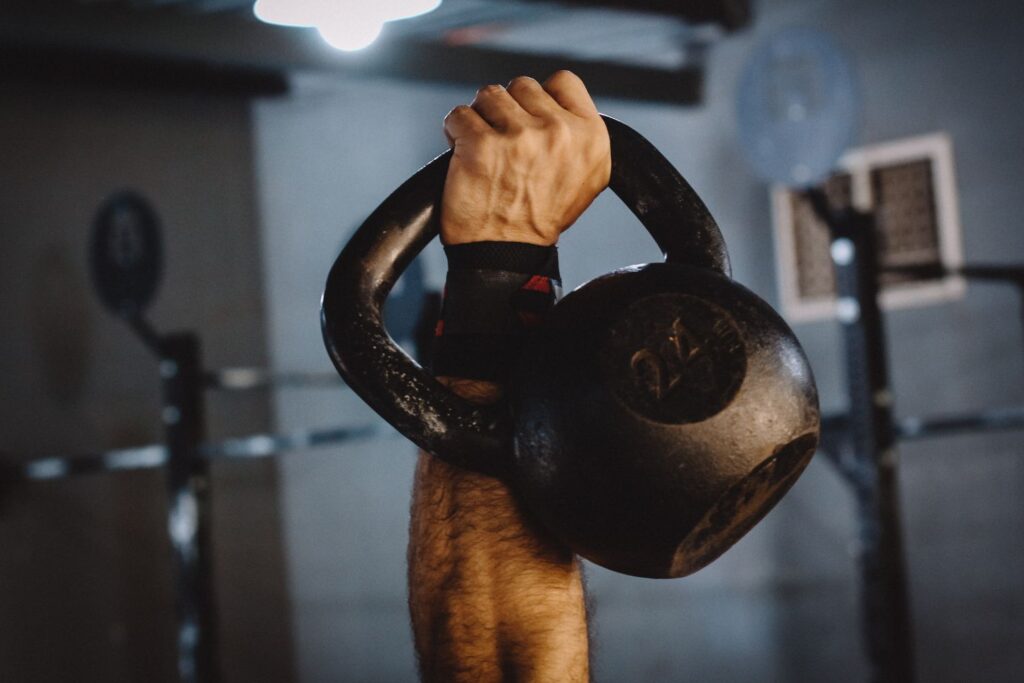If you’re looking to ramp up your strength training routine, heavy kettlebell workouts might just be the challenge you need. Whether you’re seasoned in kettlebell training or just looking to shake things up, heavy kettlebells offer an excellent way to build muscle, improve your stability, and boost your overall fitness. In this guide, we’ll explore a variety of heavy kettlebell exercises, their benefits, and how to incorporate them into your fitness regimen.
Benefits of heavy kettlebell workouts
- Building strength and power: Heavy kettlebell exercises are a powerhouse for building raw strength. The added weight demands more from your muscles, pushing them to grow stronger and more resilient. It’s like upgrading your workout from a standard sedan to a powerful sports car—everything becomes more intense, more effective.
- Enhancing stability and balance: When you work with heavy kettlebells, you engage more stabilizer muscles, which helps improve your balance and coordination. This is crucial not just in workouts but in everyday activities. The dynamic nature of kettlebell movements means you’re constantly adjusting, refining your control over the weight.
- Improving cardiovascular fitness: Believe it or not, heavy kettlebell workouts can give your heart a run for its money. The combination of strength and cardio elements in these exercises means you’re burning calories and increasing your heart rate simultaneously. It’s a win-win for those looking to improve both strength and cardiovascular fitness.
Essential warm-up exercises
- Dynamic stretching: Before diving into your heavy kettlebell routine, it’s vital to warm up properly. Start with dynamic stretching to get your muscles ready and your blood flowing. Think of it as priming your body for the work ahead. Focus on areas that will be heavily involved in your workout, like your shoulders, hips, and legs.
- Joint mobilization: Joint mobilization exercises help increase the range of motion and reduce the risk of injury. Arm circles, hip rotations, and ankle flexes are all great ways to ensure your joints are ready to handle the stress of heavy lifting.
- Kettlebell swings as a warm-up: Incorporating lighter kettlebell swings as a warm-up is an excellent way to prepare your body. This movement gets your hips, glutes, and core engaged, setting the stage for more intense exercises. Plus, it’s a great way to refine your form before moving on to heavier weights.
Top heavy kettlebell exercises to try
- Double kettlebell front squat: Stand with your feet shoulder-width apart, holding a kettlebell in each hand at shoulder height. Keep your chest up and engage your core as you lower into a squat, making sure your knees track over your toes. Push through your heels to return to the starting position. This exercise targets your quads, glutes, and core, providing a full lower-body workout.
- Kettlebell deadlift: Stand with your feet hip-width apart, with a kettlebell between them. Hinge at your hips, keeping your back flat and chest up as you reach down to grab the kettlebell. Drive through your heels to lift the kettlebell, squeezing your glutes at the top. The deadlift is a fundamental movement that targets the posterior chain, including the hamstrings, glutes, and lower back.
- Kettlebell clean and press: Start with the kettlebell on the ground. Clean the kettlebell to your shoulder by driving through your legs and pulling the kettlebell up to shoulder height in one fluid motion. From here, press the kettlebell overhead, keeping your core tight and your arm straight. Lower it back to the starting position and repeat. This compound movement works multiple muscle groups, making it a highly effective exercise for overall strength.
- Kettlebell Turkish get-up: Lie on your back with a kettlebell in one hand, arm extended toward the ceiling. Bend the knee on the same side, keeping the other leg straight. Use your free hand for support as you sit up, then move into a lunge position, and finally, stand up fully. Reverse the movement to return to the starting position. This exercise is a full-body challenge, requiring coordination, balance, and strength.
For more fitness tips, make sure to follow our blog.
Final thoughts
Heavy kettlebell workouts are not for the faint of heart, but they’re incredibly rewarding. By incorporating these exercises into your routine, you can build serious strength, improve your stability, and boost your cardiovascular fitness. Remember to warm up properly, focus on form, and listen to your body as you progress. With consistency, you’ll see impressive gains in both strength and overall fitness.





